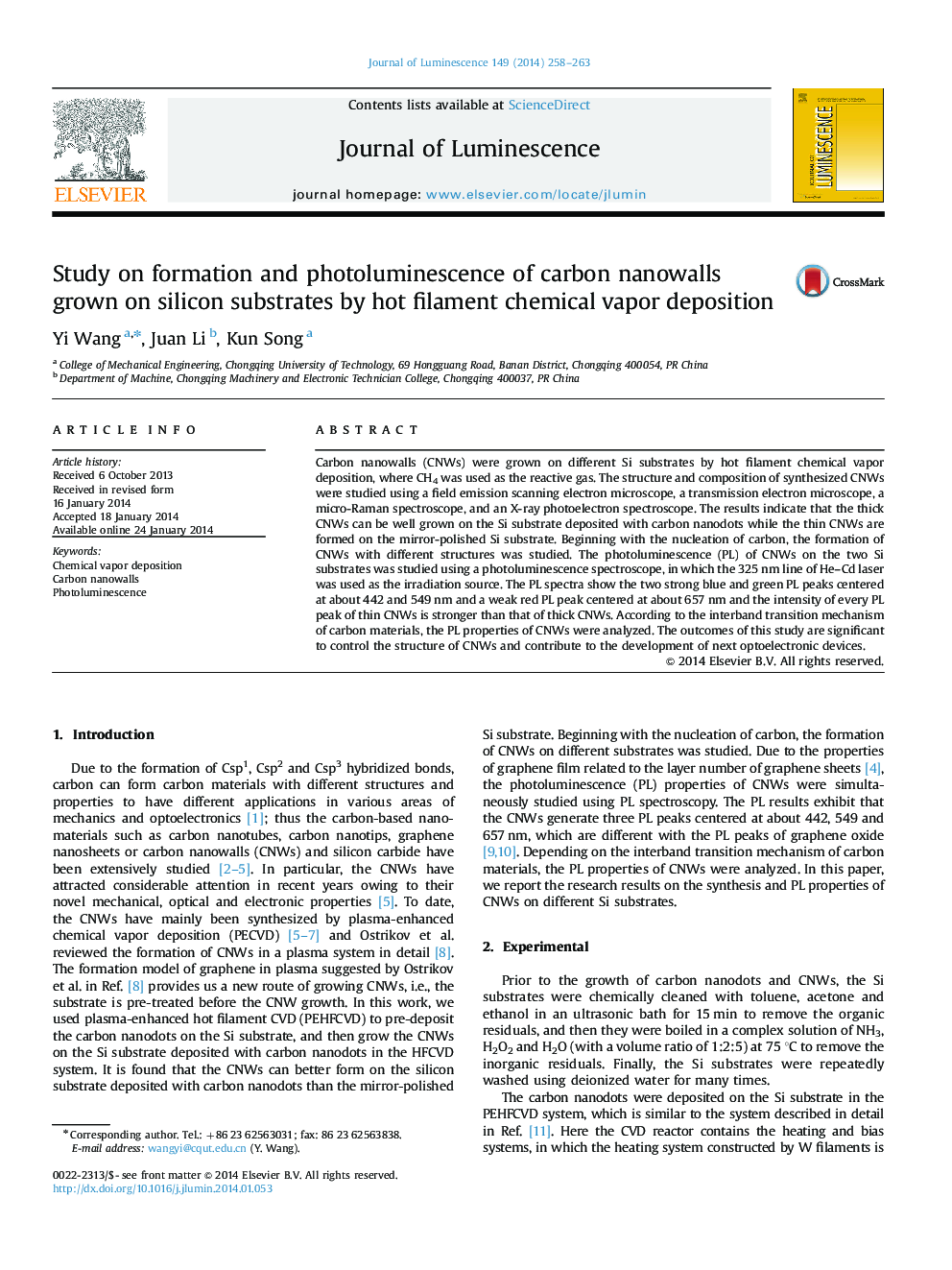| Article ID | Journal | Published Year | Pages | File Type |
|---|---|---|---|---|
| 5400271 | Journal of Luminescence | 2014 | 6 Pages |
Abstract
Carbon nanowalls (CNWs) were grown on different Si substrates by hot filament chemical vapor deposition, where CH4 was used as the reactive gas. The structure and composition of synthesized CNWs were studied using a field emission scanning electron microscope, a transmission electron microscope, a micro-Raman spectroscope, and an X-ray photoelectron spectroscope. The results indicate that the thick CNWs can be well grown on the Si substrate deposited with carbon nanodots while the thin CNWs are formed on the mirror-polished Si substrate. Beginning with the nucleation of carbon, the formation of CNWs with different structures was studied. The photoluminescence (PL) of CNWs on the two Si substrates was studied using a photoluminescence spectroscope, in which the 325Â nm line of He-Cd laser was used as the irradiation source. The PL spectra show the two strong blue and green PL peaks centered at about 442 and 549Â nm and a weak red PL peak centered at about 657Â nm and the intensity of every PL peak of thin CNWs is stronger than that of thick CNWs. According to the interband transition mechanism of carbon materials, the PL properties of CNWs were analyzed. The outcomes of this study are significant to control the structure of CNWs and contribute to the development of next optoelectronic devices.
Related Topics
Physical Sciences and Engineering
Chemistry
Physical and Theoretical Chemistry
Authors
Yi Wang, Juan Li, Kun Song,
